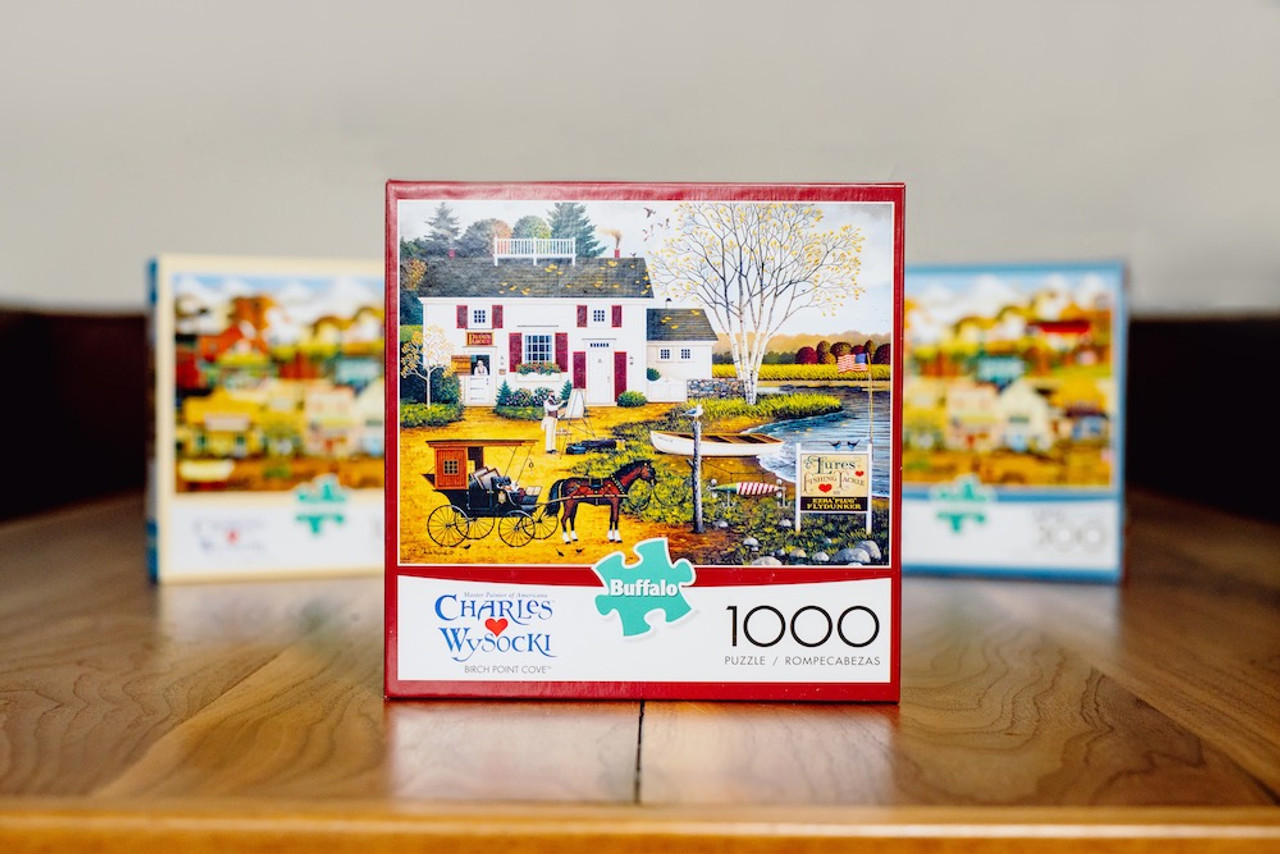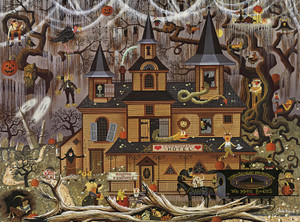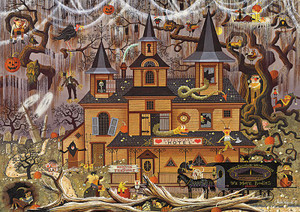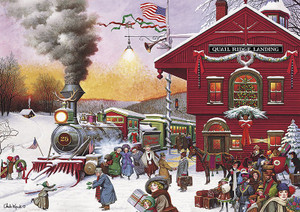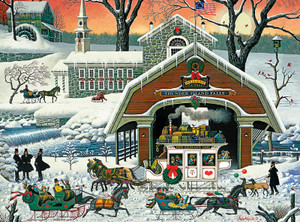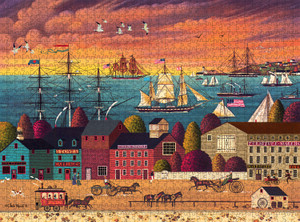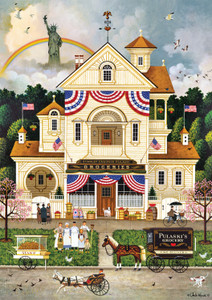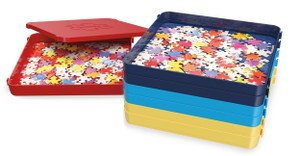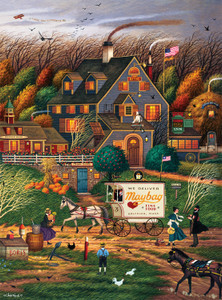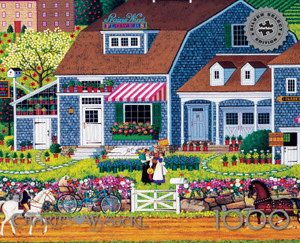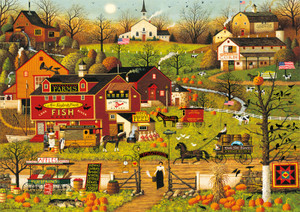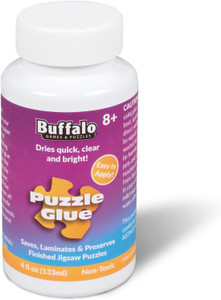Posted by Buffalo Games on Mar 29th 2022
How to Solve 1,000-Piece Jigsaw Puzzles
Jigsaw puzzles have been popular hobbies and activities for generations for many different reasons. The benefits are the same, whether it’s a puzzle with 100 pieces or a 2,000-piece puzzle.
People enjoy the thrill of the challenge just as much as the stress-relieving aspects of puzzles. Many enjoy using them to unwind and forget about their troubles for a while.
Completing jigsaw puzzles can be an excellent, fun way to get the whole family together. In addition to connecting family members with a fun activity, additional benefits of putting puzzles together include:
- Enhancing visual-spatial reasoning
- Boosting short-term memory
- Delaying Alzheimer’s and dementia
- Increasing focus and attention to detail
- Improving mood
- Decreasing stress levels
- Improving problem-solving skills
There are many other great reasons to put puzzles together, such as teaching patience, practicing goal setting, and building a sense of achievement.
Speaking of patience, you might be wondering how long it takes to put a puzzle together. Many variables come into play to determine how long someone will take to finish; it might take one hour or 30. However, completing most standard 1,000-piece jigsaw puzzles takes five to ten hours.
Tips for Solving 1,000-Piece Puzzles
Preparation is the key when you’re about to start a new puzzle. If you prepare correctly, the entire experience will be much more enjoyable, and you’ll run into fewer frustrations.
Consider Accessories from Puzzles Stores
Before you begin, consider buying some accessories from an online store. Accessories are designed to bring more convenience and fun to the table! Some of the best accessories to consider before you begin include:
- A roll-up puzzle mat so you can roll your puzzle up when you’re not working on it
- Sorting trays for all of your puzzle pieces
- Puzzle adhesive for after you finish the puzzle
A note about puzzle adhesive: peel-and-stick puzzle adhesive is an excellent accessory for saving your puzzle once it’s completed. Although puzzle glue is available, the peel-and-stick adhesive is a straightforward solution without the mess that glue comes with. Just peel off the protective paper, press the adhesive to the back of the puzzle, and that’s it!
Prepare Your Workspace
Choose a work area with plenty of room for your puzzle, pieces, and sorting tray. Most puzzle boxes have the finished size printed somewhere, so make sure to look. You should also confirm that you have at least a couple of inches of free space at each side of the puzzle.
The surface of the area should be a contrasting color to most of the pieces in your 1,000-piece puzzle. This way, you’ll have a much easier time seeing each piece. Many people choose white tables to work on; alternatively, you can also assemble your puzzle on top of white butcher paper.
Many others, however, prefer to use a black surface or roll-up mat. Black is easier on the eyes than white and does a great job at making colored pieces stand out. So if you’re using a roll-up puzzle mat, the optimal choice is one with a black surface.
When choosing a work area for jigsaw puzzles for adults, don’t underestimate the importance of good lighting. Crisp light that is bright enough to see the pieces clearly will help reduce eye strain and fatigue. In addition, you won’t waste time picking up every piece to bring it close to your face to try to see it clearly!
Floor lamps are okay but are advised that they can cast shadows. Consider a desk lamp; some people also use headlamps! Be cautious using lamps with cords; you want to avoid any potential cord mishaps.
Divide and Conquer
Make sure all of the pieces are turned with the printed side facing up before doing anything else. This is a great time-saver in the long run; you’ll spend a lot less time hunting for pieces and getting flustered. You’ll eventually need to turn all of the pieces over at some point, so you may as well help yourself out and do it all at the start.
Even though it may be tempting to dive right into a new 1,000-piece puzzle straight after you open the box, in the long run, it will do worlds of good if you take the time to sort your pieces into groups (and use sorting trays).
You can sort them according to color, pattern, or other groups that belong together, such as pieces of an animal in a puzzle that has a starry night background.
Many people like to separate (and begin with) the edge pieces. These are easily recognizable because they have one straight edge (corners, of course, have two).
Get It Together
As mentioned, many people prefer to begin assembly with the edge pieces. The border can be assembled first, and you can extend inward from the frame.
Once you have the edge pieces assembled, make sure that you leave the center of the frame empty. Many people slowly “collect” pieces in the center as they hunt for others, but doing so clutters your workspace. Leaving the middle clear will save much time when you’re ready to put the puzzle’s center together.
Work in small sections as you try to match up the puzzle pieces. Some areas usually are easier to put together than others, such as those with long lines in the print that you can easily connect.
Don’t try to place pieces all over the puzzle. Working in small sections away from the edge pieces can be done, and you can work your way toward those borders little by little.
Don’t Give Up!
It takes patience and perseverance to finish 1,000-piece puzzles! If you begin to get tired or frustrated, walk away for a while (this is where roll-up mats come in really handy). Remember that puzzles should offer fun, relaxing experiences. If you’re not relaxed or having fun, take a break and come back later!
